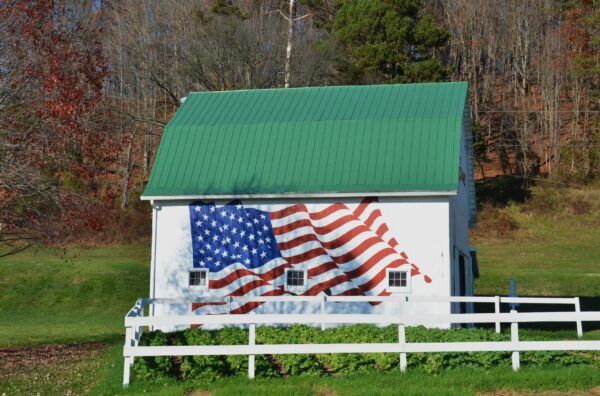This conversation has been edited for clarity and length.
You’ve been a relatively private figure despite being at the helm of some of Broadway’s most visible shows. What was the catalyst for writing such a raw, honest, and revealing memoir at this point in your life?
Broadway and Broadway musicals have been an essential part of my life since I was 13. I remember how deeply I felt about the musicals of my youth, from A Chorus Line and Pippin to Evita and Dream Girls. Knowing I’ve been part of some of the most powerful musicals of today—from Rent to Hamilton—and knowing how important they are to young people made me want to share with young people what it was like to make those musicals. I wanted to be of service to young theater kids.
My own story is a unique, coming-of-age, American dream story. I wanted to tell that story for anybody who has ever felt like an outsider, or felt disregarded, and for anybody who’s ever loved the theater and found it to be a safe haven for expression, joy, and growth.
The audiobook version of your book features an all-star cast of Broadway artists. What was the process like of bringing those voices in, and what did it mean to you to have them be a part of telling your story?
I collaborated with Simon & Schuster to create an audiobook in which I served as author and co-producer. A lot of people have told me that they enjoyed the audiobook as a different way to experience the book.
I knew we needed to make an audiobook, and I didn’t want my voice to be the only voice in the book. However, I knew that most publishers would say that if a memoirist doesn’t read their book and instead has an actor read it, there’s something about it that just doesn’t feel authentic. They wanted me to read it, but I wanted to produce a show and mix it up.
So I thought, let’s do this as a staged reading—which is what we do all the time with our shows—we bring in actors to read a play out loud or sing a musical from beginning to end. And what made this so special was that I was able to invite and work with some of the greatest performers on Broadway.
I’m an old-fashioned reader. I find audiobooks, especially the singular voice, soporific—they just make me sleepy because there’s a homogeneity to the reading. I find that podcasts and audiobooks with music and sound effects keep me awake. So I thought, “What can we do for this book? Let’s change it up.”
The rush and lottery ticket systems you helped create for shows like Rent and Hamilton were about breaking down barriers to access. Do you see a parallel between making theater accessible and making voting accessible?
I love this comparison. When I produced Rent, I was 31 years old and I could barely afford a full-price ticket to a Broadway musical—I just didn’t have that much money. My then business partner and I were eager to find a way to ensure that the very audience for whom Jonathan Larson wrote Rent could actually afford to come and see Rent on Broadway. When we first started it, tickets were only $20 at the box office, and they sold two hours before the show. Each person could buy two tickets. Then this idea dropped into our laps: What if we put the $20 tickets in the first two rows of the orchestra? That way, the people who are so passionate that they’re willing to wait in line to see this show will create a wave of excitement that goes from the front of the theater all the way to the back of the balcony. And that’s what we did.
A year after Rent opened on Broadway, it was so popular that kids were sleeping overnight outside the Nederlander Theater so they could be at the front of the line to get the subsidized ticket. At this time, 41st Street in New York City was still pretty derelict, and we were afraid for their safety, so we decided to convert the waiting in line process to a lottery process starting at six o’clock. This shift increased accessibility even more because people who work could show up at six o’clock, enter the lottery, and have a chance of winning for an eight o’clock show.
The lottery system became a ubiquitous policy for almost every Broadway musical thereafter. I was particularly proud when I saw that the Metropolitan Opera now offers a lottery for very cheap seats in the back of the orchestra. In 2015, we cut the price for a Hamilton ticket from $20 to $10. To this day, the Hamilton lottery all over the country is $10.
Traditional political mobilization isn’t reaching everyone. We need the arts, actors, influencers, and non-political messengers to broaden civic participation and build a more diverse and representative democracy. We’re always trying to do this at VoteRiders, and you’ve done this so well. How can we encourage even more artists and changemakers to join the fight for democracy?
I am thrilled by this question. How can we use art in a political way to affect public policy? In small ways, I achieved some of that with Rent, in slightly smaller ways with Avenue Q, and in bigger ways with Hamilton. I want to continue exploring that and find ways for us to work together as artists and activists. I don’t have a magic answer—we’ve been fighting this fight for over 100 years.
As political participation began to decline in this modern era, public relations and propaganda emerged as new phenomena aimed at influencing people’s votes. Most people don’t have that much time to focus on elections because they’re busy. They’re getting their children up, fed, to school, soccer games, and after-school programs. They’re going to work, getting their car fixed, going to doctor visits, shopping for dinner, making dinner, and helping their kids with homework. People are tired. So the question becomes, how do we engage with folks, given how tired they are?
How do we let people know that these elections affect their daily lives? Right now, there’s a disconnect for so many people. So many people think voting doesn’t matter. But if you, your aunt, or your mother is on Medicaid, it matters. If you receive a Pell Grant to go to college—which I did—it matters.
These are all public policies that matter, and our job is to continue helping people understand that they affect their everyday lives.
At VoteRiders, our mission is to help people get an ID for voting, but you also need an ID for housing, employment, medical care, and more. And we believe that the more we can get people an ID so they can fulfill their basic needs, the more time they have to engage in our democracy and participate in shaping their communities.
Life is complicated. The number of forms we have to fill out, the number of times we have to get new IDs, and make new passwords, just to do everyday things. I can’t even turn on the TV anymore because it’s gotten so complicated. Anything we can do to simplify someone’s public life is of great value because it’s hard and confusing, and people don’t have time.
What do you think is the biggest obstacle to a healthy democracy today?
False propaganda—the gigantic avalanche of misinformation that shapes people’s opinions—is the biggest obstacle. I believe that if people are given the facts, they can make the right decision for themselves. But we have many political players who lie—and when they are called out on it, they say it’s just ‘alternative facts.’ That’s just not true. Your blood type is your blood type—it’s a fact. Right now, we have a very dangerous combination of misleading narratives, alternative facts, and outright lies, and it’s the stream of lies that is our most significant impediment to democracy.
VoteRiders needs to keep providing voters with the facts—like what identification, if any, a state requires to vote. This is a fact that voters must have, and VoteRiders must continue to provide them with the information and resources they need to make their own decisions about who to vote for.
VoteRiders focuses on a very specific, practical problem: helping people get the IDs they need to vote. What drew you to support this particular organization, as opposed to other voting rights groups?
In 2018, there was a special Senate election in Alabama, and an activist wanted to turn out more voters, but he was shy and didn’t want to go door-to-door. So, he started a letter-writing campaign, and from what I understand, that was one of the first really successful letter-writing campaigns. It actually did help get out the vote.
And then, when COVID hit in 2020, letter writing took off. It was discovered that the rate of return on sending letters is strong, maybe 2 or 3%. Meaning that if you send out 100 letters, you get two or three people who would not otherwise have voted, to go vote.
So, then Hamilton started participating in letter-writing efforts, including with VoteRiders, generating hundreds of thousands of letters in Wisconsin and Georgia ahead of the 2020 election. We increased voter participation by thousands, and the margin of victory in those two states was thousands, so it helped.
Everyone still speaks so fondly about our engagement with the Hamilton cast during COVID and in 2022. They joined our letter-writing parties and brought so much inspiration and energy to our VoteRiders’ volunteers. We have already written 50,000 letters to at-risk voters in battleground states this year, and I love that you cited our letter-writing parties as a particular aspect of VoteRiders’ programming that you’re excited to get behind. Letter writing is a great way for us to engage volunteers from across the country to get the right information to the right voters at the right time.
Whether through art and theater, voter education, direct service, or small acts of civic engagement, Seller reminds us that everyone has a role to play in building an accessible and inclusive democracy. To learn more about VoteRiders and how to get involved in protecting the freedom to vote, visit our website at VoteRiders.org.
November 21, 2025.




